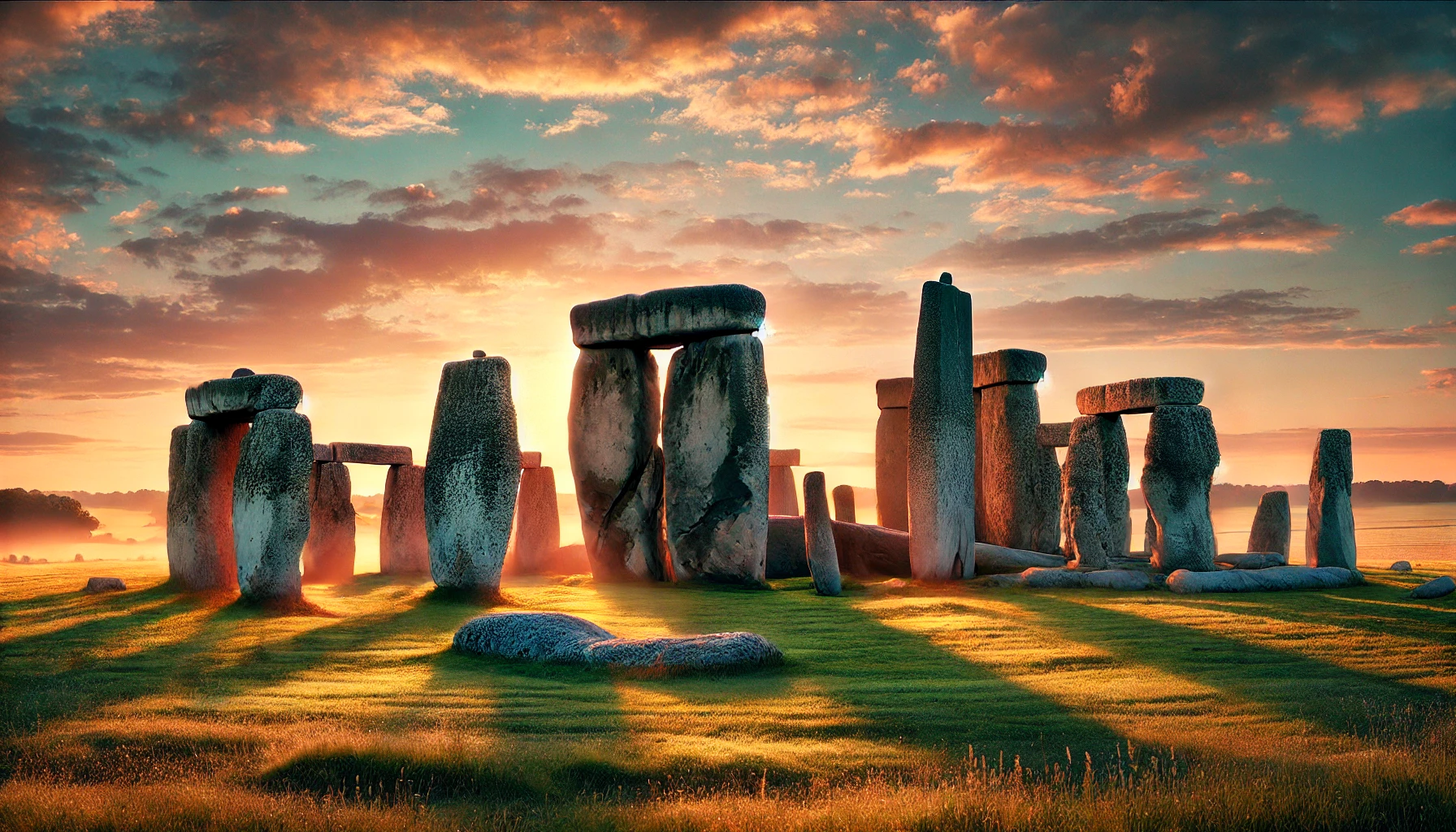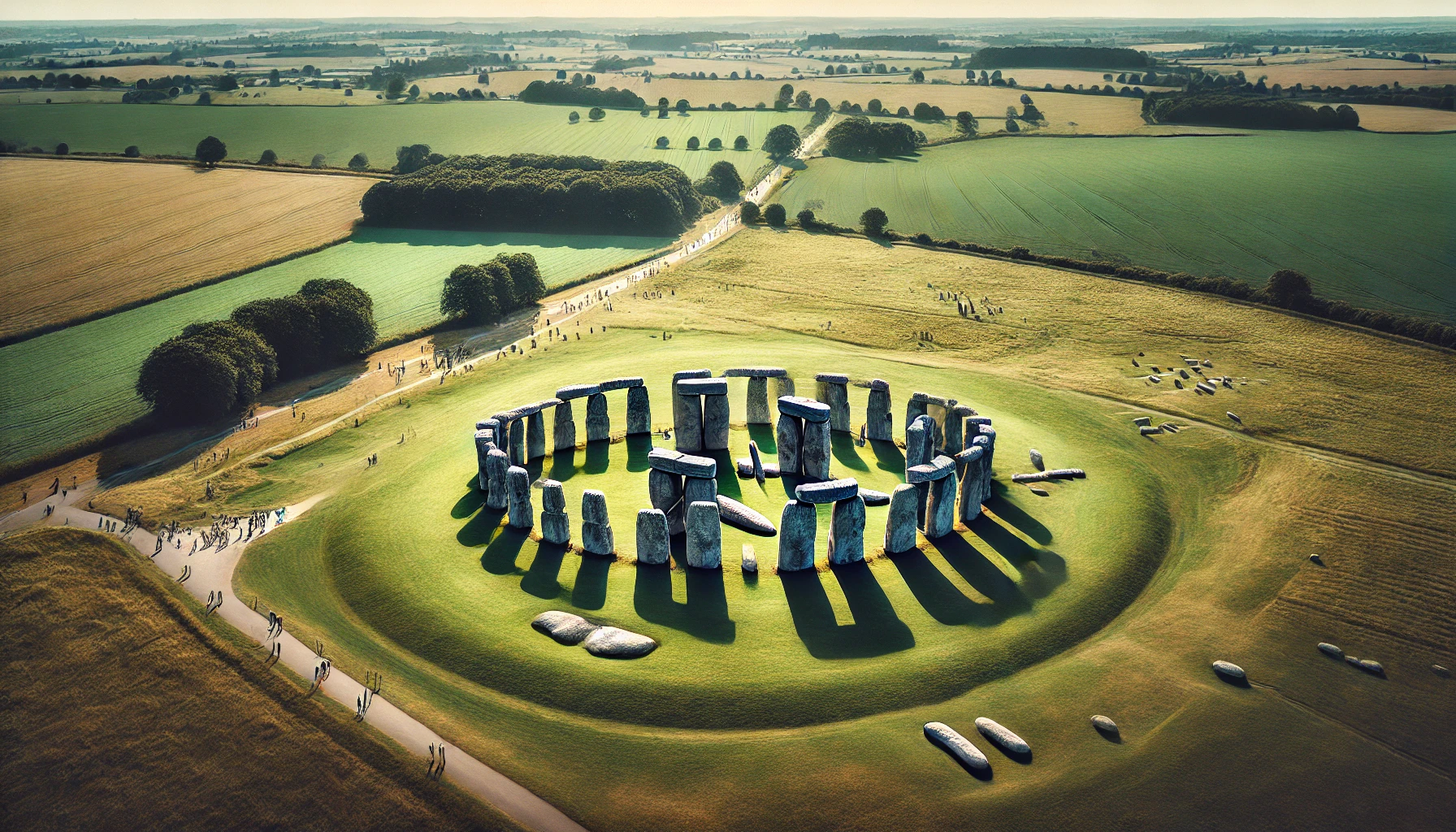
Stonehenge in England stands as one of the most iconic prehistoric monuments in the world. Its towering stones, arranged in a mysterious circular formation on the Salisbury Plain, have fascinated generations. This ancient structure has not only sparked curiosity about its origins and purpose but also attracted millions of visitors every year who are drawn to its enigmatic beauty. The history of Stonehenge is steeped in mythology, mystery, and scientific discovery, making it a fascinating window into the culture and traditions of ancient civilizations.
The Origins of Stonehenge: A Monument to the Past
Stonehenge’s construction dates back over 4,000 years to the Neolithic era, with some parts possibly even older. Its beginnings are a testament to the ingenuity and determination of the people of that time. But how exactly was such an immense structure built, and what purpose did it serve?
Archaeological evidence suggests that the construction of Stonehenge occurred in several phases. The earliest known use of the site was as a circular earthwork around 3000 BCE, which was later developed into the iconic stone monument we see today. The massive stones, some weighing as much as 25 tons, were transported from as far as Wales, an astonishing feat considering the primitive technology available at the time.
The exact reasons for its construction remain speculative, but many believe that Stonehenge served as a ceremonial or religious site. Its alignment with the solstices suggests a deep connection with astronomical events, leading some researchers to propose that it may have functioned as an ancient observatory. Others argue that it was a burial site or a center for healing. Despite the lack of concrete answers, the enduring allure of Stonehenge lies in its enigmatic nature.
Stonehenge and Its Spiritual Significance
For many people, Stonehenge is more than just a historical relic; it is a place of spiritual significance. Throughout the centuries, various cultures have attributed different meanings to this ancient structure, often linking it to mystical or religious beliefs.
One of the most common theories is that Stonehenge was a Druid temple. Druids, the high-ranking professional class in ancient Celtic cultures, were said to have used Stonehenge for their rituals. However, modern research has shown that Stonehenge predates the Druids by more than a thousand years, casting doubt on this theory. Nevertheless, the connection between Stonehenge and spirituality has persisted, with modern-day Druids and Pagans continuing to gather there for ceremonies, particularly during the summer and winter solstices.
The spiritual significance of Stonehenge is heightened by its precise alignment with the sun. During the summer solstice, the sun rises directly above the Heel Stone, creating a dramatic spectacle of light and shadow that has attracted people for thousands of years. This event, celebrated annually by thousands of visitors, highlights the monument’s profound connection to natural cycles and its possible role in solar worship.
In more recent times, Stonehenge has become a symbol of the connection between humanity and the cosmos. It is seen as a sacred space where people can meditate on their place in the universe, reflecting on the awe-inspiring accomplishments of ancient civilizations and the mysteries that continue to surround this monument.
Engineering Marvels: How Stonehenge Was Built
The sheer scale and precision of Stonehenge make it one of the greatest engineering feats of the ancient world. Given the rudimentary tools and technologies available to Neolithic people, the construction of Stonehenge was an astonishing achievement. So how exactly did they do it?

The stones used in the construction of Stonehenge are classified into two types: the larger sarsen stones and the smaller bluestones. The sarsen stones, which make up the outer circle and the central trilithons, were likely sourced from local quarries in the Marlborough Downs, about 20 miles away. The bluestones, on the other hand, came from the Preseli Hills in Wales, over 150 miles from Stonehenge. Transporting these massive stones over such distances required extraordinary planning and effort.
Researchers believe that the stones were moved using a combination of sledges, rollers, and ropes, with teams of people working together to haul the massive loads across the landscape. Once the stones arrived at the site, they had to be carefully positioned in the ground. This required digging large pits to anchor the stones, and then using levers and ramps to raise them into place. The final result was an intricately designed monument with stones aligned to the cardinal directions and key celestial events.
The construction techniques used at Stonehenge demonstrate not only remarkable ingenuity but also a deep understanding of geometry and astronomy. The builders had to ensure that the stones were perfectly positioned to align with the sun’s movements, further reinforcing the idea that Stonehenge was more than just a physical structure—it was a sophisticated tool for observing the cosmos.
Stonehenge in Modern Times: Preservation and Tourism
Stonehenge has captivated people for centuries, and its preservation has been a priority for both the British government and heritage organizations. Today, Stonehenge is a UNESCO World Heritage site and one of the most popular tourist destinations in the United Kingdom, attracting over a million visitors each year.
The preservation of Stonehenge has been a long and complex process. Over the years, the site has suffered from natural erosion, human interference, and the ravages of time. In the 20th century, major restoration efforts were undertaken to prevent further damage and ensure that future generations could continue to enjoy this historic site. These efforts included re-erecting fallen stones, reinforcing the foundations, and creating a visitor center to educate the public about the monument’s significance.
Tourism has played a significant role in Stonehenge’s modern story. The site is carefully managed to balance the needs of preservation with the desire to share its wonders with the world. Visitors can now explore the monument through guided tours, exhibitions, and virtual experiences, learning about its history, construction, and cultural importance. Special events, such as the solstice celebrations, offer a unique opportunity to experience Stonehenge in a more immersive and spiritual context.
Despite the commercialization of Stonehenge, it remains a place of profound cultural and historical importance. For many, a visit to Stonehenge is a pilgrimage of sorts—a chance to connect with the ancient past and marvel at the achievements of early human societies.
Conclusion
The culture and history of Stonehenge are as intricate and fascinating as the monument itself. From its mysterious origins and spiritual significance to its incredible construction and enduring legacy, Stonehenge continues to captivate the imagination of people around the world. As we learn more about this ancient site, we gain a deeper appreciation for the skill, intelligence, and creativity of the people who built it. Whether you visit for its historical value, spiritual significance, or simply to witness the breathtaking beauty of its ancient stones, Stonehenge remains a timeless symbol of human ingenuity and the enduring mysteries of our past.








